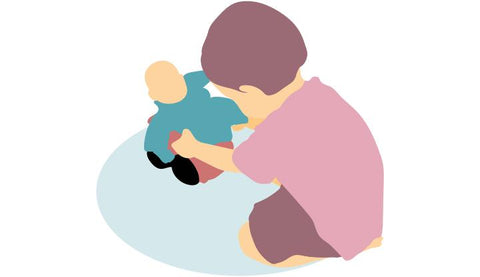Gender bias at home is a part of our psyche that has been ingrained in us over years of being exposed to different cultures, social structures and economic factors that support patriarchy. This is reflected in how children are treated differently based on gender. While there are several important issues like boys being given priority for healthcare, education, and other resources, there are some other things that we subconsciously have a bias about that may pass on to our children.
1. Colours: In many homes, pink and warmer shades like purple, and red are considered colours suitable only for girls. For example, clothing marketed to girls often features pink and pastel colours, glitter, and princess imagery, while clothing marketed to boys often features bold colours, sports themes, and images of superheroes. These gendered messages can influence children's understanding of gender and limit their expression and exploration of their own identities. In recent years, there has been a growing movement towards gender-neutral clothing, which seeks to challenge traditional gender roles and provide more inclusive options for people of all genders. We must however be careful to not influence children’s decisions with our messaging and choice and rather allow them to choose what they feel comfortable in. Forcing a boy to wear pink even if it is not his favourite colour may not be the right way to go. If the child says- “Pink is for girls!”, that is something to address and have a conversation about why they think so.

2. Toys: Children are often given toys that are considered gender-specific, with girls being given dolls, kitchen sets, and makeup kits, while boys are given cars, action figures, and sports equipment. Even the colour palette of these toys tends to be geared towards ‘pink’ for girls and blue for boys. This can limit children's interests and reinforce gender stereotypes.

3. Chores: Girls in Indian homes are often expected to do household chores such as cooking, cleaning, and taking care of younger siblings, while boys are not expected to contribute as much. This reinforces the idea that girls should be responsible for domestic work and limits their opportunities to pursue other interests. This attitude is reinforced when children see only adult women doing daily chores at home. Subtler examples include mothers deciding to eat last or leftover food, father’s favourite food being cooked always, boys sent outside on errands while girls take up only household chores.

Clothing: Our clothing options reinforce our gender identity. For example, clothes considered feminine are dresses, skirts, sarees, salwar kameez, blouses etc. While masculine choices are dhotis, sherwanis, shirts, t-shirts and pants. While it is completely fine for people to express themselves with their clothing choices, forcing a child or teenager to wear a piece of clothing that does not resonate with their identity and comfort is not kind. Secondly, clothes for girls need to allow for movement and comfort and should be loose/well-fitted and not tight and restrictive. By forcing them to wear uncomfortable dresses, we are reinforcing the stereotype that girls are meant to look pretty and not move around too much!
Accessories: Accessories are meant to complete our outfits and are also a way of expressing ourselves- but why again do we see restrictions on colours, patterns and choices? Wearing necklaces, bangles and earrings is seen as feminine and not ‘manly’ even though we come from a long and rich history of kings and queens dressing up lavishly.

As a society, things are changing. Manufacturers are also coming up with toys, clothing and accessories that are gender-neutral in design and colour. History shows us that female empowerment came against the backlash of war and economic issues. For example, women who signed up for work when their husbands were away at war in the West began to wear pants to work more comfortably. The lengths of the skirts were reduced owing to sanctions on fabric and therefore were seen as a sign of patriotism!
Over the years, however, the trend is to celebrate masculine choices of clothing, comfort and toys for women. We see media quick to label a woman with short hair, masculine clothes and accessories as ‘strong, decisive, and independent’, while men who choose feminine clothing or makeup still get a bad rep or are ‘not manly enough’. Feminism is about equal opportunity and choice- and does not involve brushing off femininity. We must learn to be aware of our words and choices' influence on future generations. Girls don’t need t-shirts that say- ‘I’m a strong girl!’ neither do boys need to buy kitchen sets instead of their favourite toy, rather, they need safe spaces where their choice is respected, accepted and allowed.






